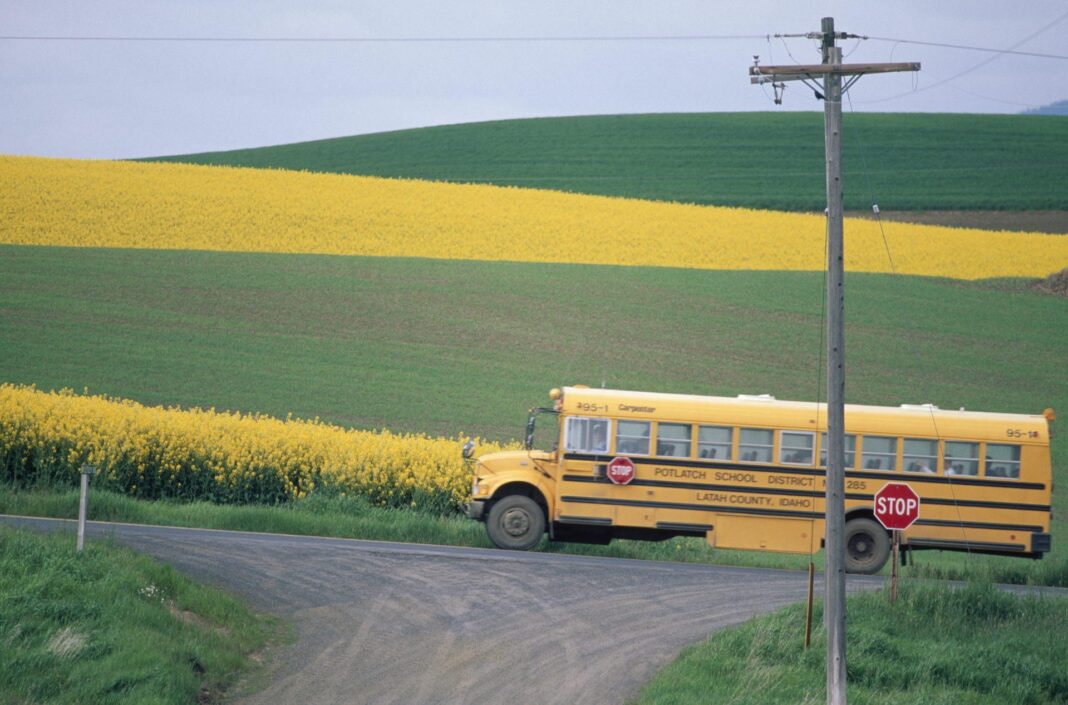A week after Hurricane Sandy flooded New York City’s streets and subways in 2012, the city’s schools were back in business. But schools in rural North Carolina did not reopen until almost a month after Hurricane Helene roared through in late September 2024.
While natural disasters and health crises may have long-lasting effects on any school system, in rural areas the lack of physical, financial and organizational resources is amplified when disaster strikes.
Fortunately, there are solutions. Based on my professional research on emergency preparedness – and my experience working in educational settings – I’ve identified several strategies that may help.
Unlike urban areas, rural districts often have little access to the recreation centers, cultural institutions, university campuses and other structures that could provide temporary sites for classes after a disaster.
Access to these buildings helped schools in New York City in the response to Hurricane Sandy.
Rural areas also have greater distances between homes, fewer buildings that can be used for temporary schooling, and deteriorating infrastructure. Educational resources are often insufficient, transportation is difficult, and many areas lack access to broadband.
Rural school districts may have weaker local funding streams. As a result, they may struggle to provide students full access to textbooks, technology and other essential materials.
Another major barrier for rural students is transportation.
In many rural communities, students rely on school buses to get to and from school. When natural disasters damage roads or disrupt transportation networks, students may be unable to attend school in person for extended periods.
Even after the immediate effects of a disaster subside, transportation issues can persist. For example, the North Carolina Department of Transportation estimated that it could take a year or more to repair road damage from Hurricane Helene.
Urban schools, with more reliable power and internet and better access to digital resources, are able to pivot quickly to online or hybrid learning when buildings are suddenly closed.
Students in rural schools, however, may have no access to reliable internet services or little or no access to the internet at all. In addition, teachers in rural areas may have more difficulty shifting classes online, since they are more likely to lack training or experience in digital instruction than teachers in cities.
The disruptions following a natural disaster have both immediate and long-term consequences. Studies have found that the effects of natural disasters include mental health issues, learning loss, lower graduation rates and diminished opportunities for higher education or career advancement.
Due to the challenges already facing rural schools, I believe preparing for a disaster in a rural area should occur earlier and take into account the specific needs of the community.
Rural schools, even more than their urban counterparts, cannot rely on a one-size-fits-all approach but need to make the best of the resources available and encourage collaboration from the local community and neighboring communities.
Here are a few strategies they could use.
Although it may seem intuitive, one key solution to school closures is developing learning materials that do not require internet access. I have found that many teachers focus on electronic resources, such as smartphones and Apple watches, and overlook the use of old-fashioned methods.
Instructional materials, such as workbooks and textbooks, should be available and used before a disaster occurs. This is to ensure that students can continue with their studies when they are cut off from school. These materials, which can be supplemented after a disaster, can include projects that students can work on independently or with their families.
Another approach incorporates mobile technology, such as smartphones. If service is available, students and teachers can communicate by phone.
When internet access is unavailable, schools can use mobile learning hubs. These are vehicles equipped with Wi-Fi, computers and other educational tools. These mobile hubs can travel to rural areas to provide students with access to digital resources. They serve as temporary classrooms or internet access points, bringing education directly to students.
During the COVID-19 pandemic, for example, I worked with a community college in Tennessee that provided mobile hubs at public libraries, school parking lots and on campus. Students were able to use these resources at all hours, day and night.
Schools can give students more flexibility in when and how they learn during the academic year. For example, schools can allow students to make up missed work at their own pace. Or schools can provide alternative learning hours to students who may need to help their families with recovery efforts.
After Hurricane Helene downed power lines and closed roads in Beaufort County, South Carolina, students who were without power or internet were given five days to complete their work and other considerations.
This flexibility helps ensure students do not fall too far behind. It may even help students better manage stress and maintain their mental well-being.
Making rural school systems more resilient when disasters occur is essential to ensuring that students can continue learning.
Advance planning, flexible learning options and partnerships with families, community support services and local and federal government programs can help. But I believe the underlying issues of the lack of resources, transportation challenges and the digital divide should also be addressed to reduce the long-term impact of crises on rural education.
This article is republished from The Conversation, a nonprofit, independent news organization bringing you facts and trustworthy analysis to help you make sense of our complex world. It was written by: Lee Ann Rawlins Williams, University of North Dakota
Read more: Rural students’ access to Wi-Fi is in jeopardy as pandemic-era resources recede 3 things that influence college graduates from rural areas to return to their communities How Hurricane Helene became a deadly disaster across six states
Lee Ann Rawlins Williams does not work for, consult, own shares in or receive funding from any company or organization that would benefit from this article, and has disclosed no relevant affiliations beyond their academic appointment.








